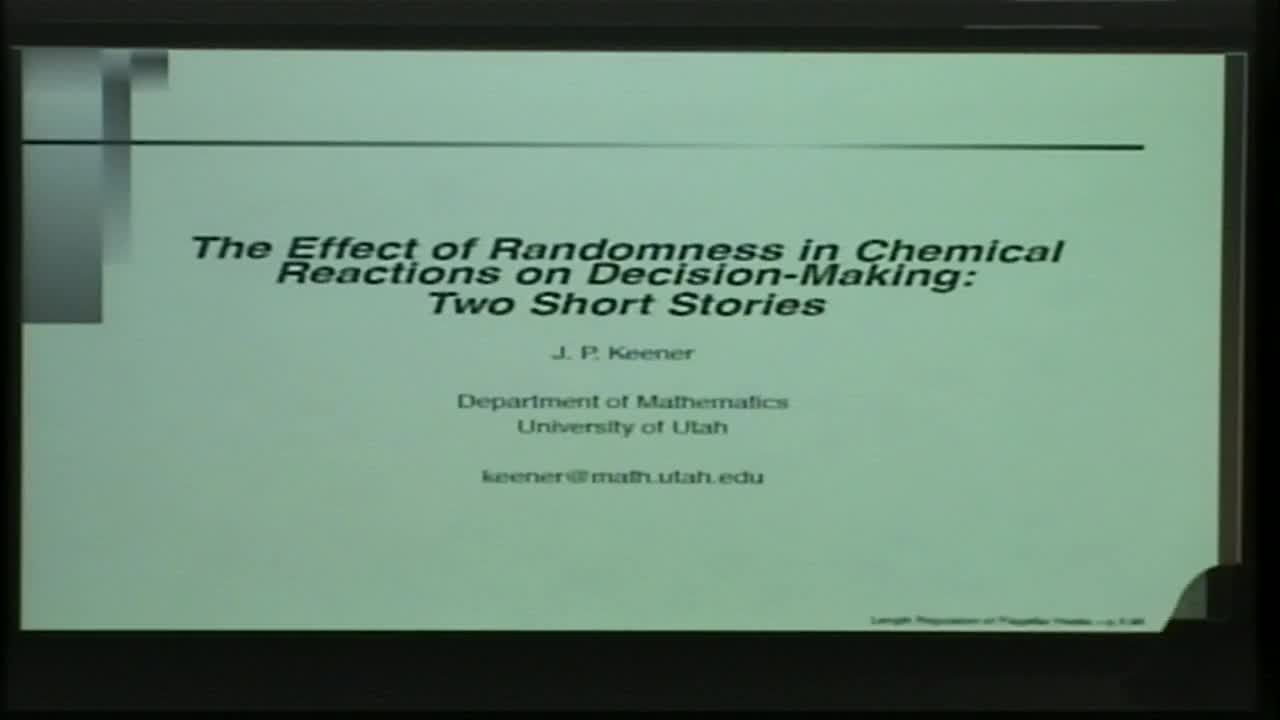The effect of randomness in chemical reactions on decision-making: Two short stories
Presenter
May 13, 2013
Keywords:
- Decision making
MSC:
- 90B50
Abstract
Story 1:
The construction of flagellar motors in motile bacteria such as Salmonella is a carefully regulated genetic
process. Among the structures that are built are the basal body, the hook and the
filament. Each of these is made only after the previous one has been completed. Furthermore the length of the hook is tightly regulated.
The question that will be addressed in this story is how Salmonella
detects and regulates the length of its hooks. The model for hook length regulation is based on the hypothesis that the hook length is determined by the rate of secretion of the length regulatory molecule FliK and a cleavage reaction with the gatekeeper molecule FlhB. A stochastic model for this interaction is built and analyzed, showing excellent agreement with hook length data. We will also describe how mathematical modeling led to predictions that were subsequently tested experimentally, an example of a Math Biology success story.
Story 2: To fire or not to fire:
The firing of an action potential by a nerve occurs when the input stimulus exceeds a threshold. However, since ion channels are discrete and they open and close randomly, ion channel noise can cause an action potential to fire even when the stimulus threshold is not exceeded. This short story will explore the mechanism underlying these spontaneous events. Specifically, we will show that the classical fast-slow analysis of deterministic models can be misleading in understanding the stochastic process.
